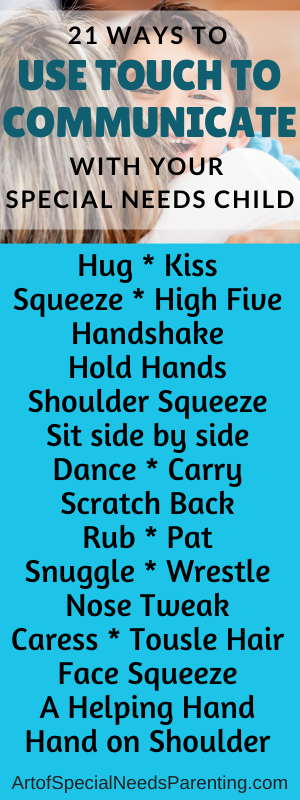
When a child is nonverbal, chances are they not only have a problem speaking, but they also have a problem processing language as it comes into their brain. It helps to develop alternate ways to communicate. Did you know you can develop a language of touch for your child, a special way to communicate that he trusts and understands?
Depending on the type, touch can communicate care, affection, acceptance, safety, love, celebration, welcome, support, encouragement, grounding in space, comfort, restraint or even fun. For example, a hand squeeze can mean wait, I’m excited for you or I’m getting ready to let go. A hug can mean hello, I’m sorry or I’m proud of you.
As you interact with your child throughout the day, add touch to your words. Above are some examples of touch. Be intentional about using them and develop a language that helps your child understand the confusing world around him. If your child is resistant to touch, try to find ways to touch her or simply lay a hand on her while she sleeps.

0 comments